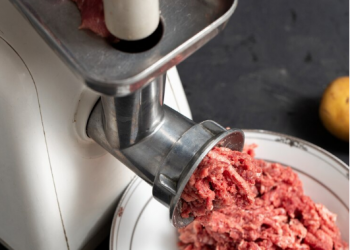For homes with septic systems, understanding the components and their functions is crucial for proper maintenance and operation. One of the most vital parts of a septic system is the leach field. This blog will delve into what a leach field is, how it works, and essential maintenance tips to ensure its longevity.
What is a Leach Field?
A leach field, also known as a drainfield or absorption field, is a critical component of a septic system. It is the area where effluent from the septic tank is dispersed into the soil for further treatment and absorption. The leach field ensures that the treated wastewater is safely returned to the groundwater system.
How Does a Septic Leach Field Work?Effluent Distribution
After wastewater flows into the septic tank and undergoes initial treatment, the partially treated effluent moves into the leach field. The effluent is distributed through a network of perforated pipes buried in gravel-filled trenches. This setup allows the effluent to be evenly dispersed across the septic leach field.
Soil Filtration
As the effluent percolates through the gravel and soil, it undergoes further natural treatment. Soil microorganisms play a significant role in breaking down any remaining organic matter, pathogens, and nutrients. This process ensures that by the time the effluent reaches the groundwater, it is purified and safe.
Importance of Soil Type
The soil type in the leach field is crucial for its effectiveness. Soil with good permeability, such as sandy or loamy soil, allows effluent to percolate efficiently while providing adequate treatment. Clay or compacted soils are less effective because they can lead to pooling and system failure.
Components of a Septic Leach FieldPerforated Pipes
These pipes, laid in gravel-filled trenches, allow the effluent to flow out and disperse into the surrounding soil. The holes in the pipes ensure even distribution throughout the leach field.
Gravel Layer
The gravel layer provides a medium for the effluent to filter through before it reaches the soil. It also supports the pipes and prevents them from becoming clogged with soil.
Soil
The soil beneath the gravel layer is the final treatment stage for the effluent. It filters and purifies the wastewater, removing any remaining contaminants before it reaches the groundwater.
Maintaining a Septic Leach FieldRegular Inspections
Regular inspections are crucial to ensure the leach field is functioning correctly. Look for signs of system failure, such as pooling water, foul odors, or lush green grass over the leach field area. These can indicate that the effluent is not being properly absorbed and treated.
Avoiding Overload
Conserving water and spreading out high-water-use activities can help prevent overloading the leach field. Too much water entering the system at once can overwhelm the leach field, leading to pooling and potential system failure.
Proper Waste Disposal
Avoid flushing non-biodegradable items, chemicals, and excessive grease down the drains. These can clog the pipes and gravel layer, hindering the effectiveness of the leach field. Proper waste disposal helps maintain the balance of microorganisms in the soil, essential for treating the effluent.
Landscaping Considerations
Planting grass or shallow-rooted plants over the leach field can help prevent soil erosion and promote evapotranspiration. Avoid planting trees or shrubs with deep roots near the leach field, as their roots can infiltrate and damage the pipes.
Signs of Septic Leach Field ProblemsPooling Water
If you notice pooling water or soggy areas above the leach field, it could indicate that the system is overloaded or that there is a blockage preventing proper drainage.
Foul Odors
Foul odors emanating from the leach field area can be a sign that the effluent is not being adequately absorbed and treated. This can occur due to clogs, soil compaction, or overloading.
Slow Drains
If the drains in your home are slow or backing up, it could be a sign that the septic tank or leach field is failing. This could be due to a full septic tank, clogged pipes, or an overloaded leach field.
Extending the Life of Your Septic Leach FieldPumping the Septic Tank
Regularly pumping the septic tank is essential to prevent solids from entering the leach field. Typically, septic tanks should be pumped every 3-5 years, depending on usage.
Water Conservation
Implementing water-saving measures, such as fixing leaks, installing low-flow fixtures, and spreading out laundry loads, can help reduce the amount of wastewater entering the leach field, extending its lifespan.
Professional Maintenance
Regular professional inspections and maintenance can help identify and address potential issues before they become significant problems. Professionals can also provide valuable advice on best practices for maintaining your septic system.
Conclusion
Understanding what a leach field is and how it works is essential for homeowners with septic systems. By properly maintaining your septic leach field, you can ensure its efficiency and longevity, protecting both your property and the environment. Regular inspections, mindful water usage, and proper waste disposal are key practices for maintaining a healthy septic system.















